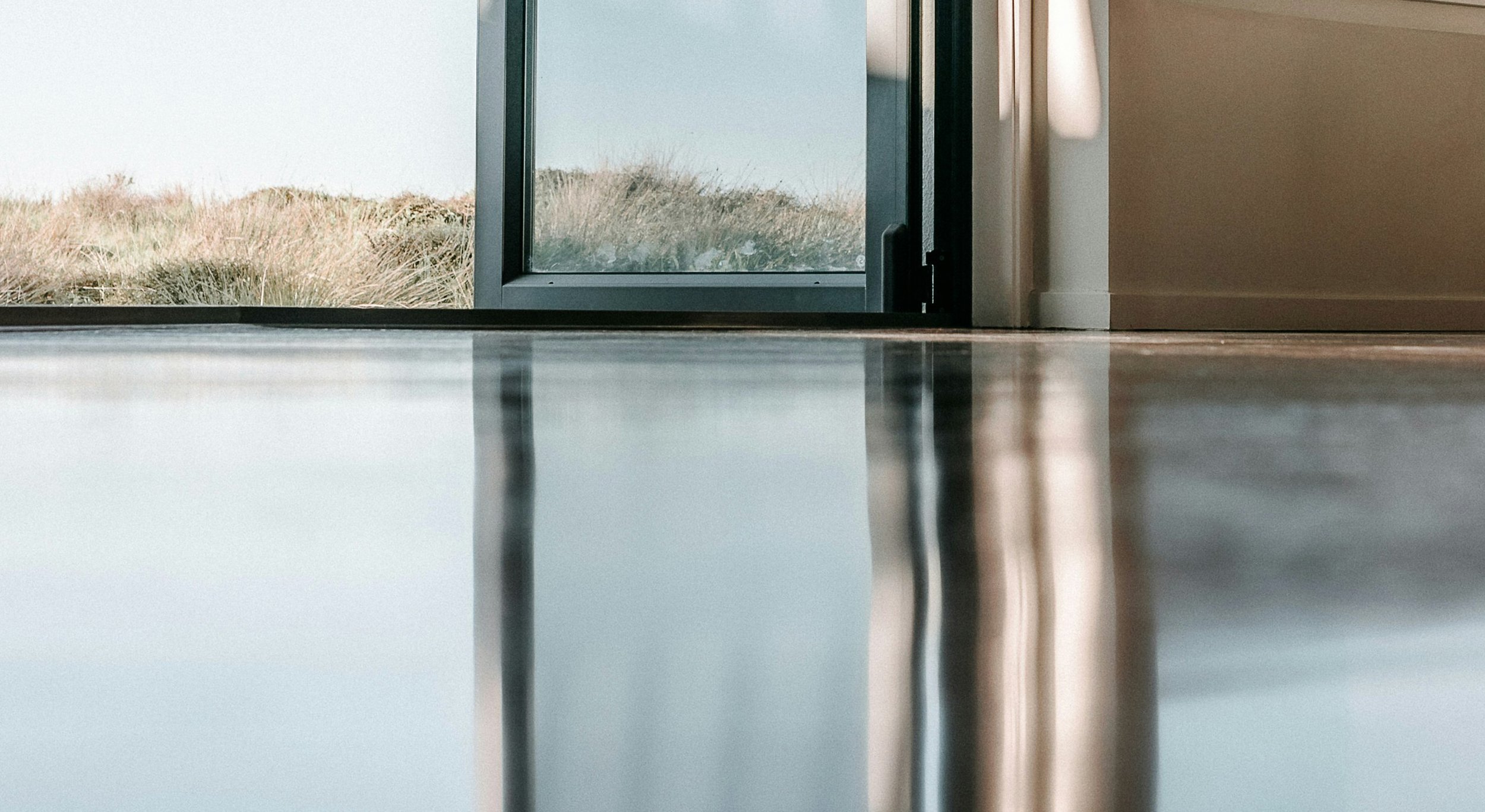
Liquid Screed Specialists.
Screedmaster - Experts in liquid screed flooring for both residential properties and commercial developments.
What we do.
At Screedmaster we specialise in pump applied, free flowing, self-compacting liquid screed flooring for both residential properties and commercial developments. Flowing screeds are the next generation in floor screed, delivering some very tangible benefits, particularly when used with an underfloor heating system.
What is Liquid Screed?
Liquid screed is a self-leveling compound made from a mixture of a chemical binder, sand and water, often with added additives for improved performance. It's poured onto floors to create a smooth, level surface, typically used as a base for flooring materials such as tiles, wood, or laminate.
Liquid screed offers advantages over traditional sand and cement screed methods, including faster drying, faster installation and achieves higher thermal conductivity by reducing cover of underfloor heating pipes and greatly improving the heat performance and reaction times of the screed. This allows for a more reactive system that requires a smaller amount of energy input compared with sand & cement.
Providing you with a service and product you can trust.
All our staff are fully trained, experienced and qualified. With more than 10 years combined experience working with liquid screed, Screedmaster can take care of all your flooring requirements.
Here to help and advise.
Choosing which products to use can be a daunting task and thats why our expert team at Screedmaster is ready on-call to discuss and help which liquid screed product is best for you.
Services We Provide
-
A liquid floor screed is a fast, efficient way to install a new floor in all kinds of construction projects, small or large. A 1000m2 liquid floor screed can easily be laid in just a day, significantly less time than a traditional sand and cement floor.
Click Here for more information and the complete product range with specifications.
-
Latex Screed is a synthetic compound that can be used in a variety of situations and on a variety of surfaces; from concrete to sand/cement bases, asphalt floors and flooring with under-floor heating.
Click Here for more information and the complete product range with specifications.
-
Epoxy Resin flooring produces a tough, hard-wearing dust-free finish, ideal to withstand use from heavy machinery such as forklifts. The strength of Epoxy resin flooring means it can withstand strong impacts such as accidental drops of heavy products without damaging the floor.
Click Here for more information.
-
Providing a stunning, natural look finish cement based floor finishes are suitable for even the most demanding floors. Self levelling and high performance properties create a suitable floor finish for commercial and residential living spaces. These products can be laid between 5mm – 40mm.
Click Here for more information and the complete product range with specifications.
-
For a liquid screed to be installed successfully the correct preparation is essential. Screedmaster is able to offer all preparation requirements.
Click Here for more information
-
Screedmaster is able to offer installation of all pipework prior to the screed installation in Exeter, Plymouth, Bristol and surrounding areas. Screedmaster can offer a complete floor preparation, Underfloor heating and flowing screed package. Flowing screeds are an ideal application over both electric and water underfloor heating systems.
Click Here for more information.
Product Range
-
Gyvlon® Screed is a complete range of floor screeds which have been manufactured using a recycled calcium sulphate binder, specially chosen aggregates and additives resulting in a free flowing self compacting screed.
Click Here for the complete range and specifications.
-
Gypsol screed is made from high-quality Gypsol anhydrite binder, specially selected sands, and clean water. Therefore, it offers the user a simple and effective floor-screeding solution for floating, unbonded, or fully bonded applications where you use a subsequent floor covering.
Click Here for the complete range and specifications.
-
Cemfloor is a high-performance, cement based, free flowing, self-compacting liquid screed designed to add value on commercial construction projects – particularly those involving underfloor heating, or on new-build residential developments where weight and floor to ceiling height restrictions mean the project could benefit from a thinner screed
Click Here for the complete range and specifications.
-
Longfloor is a high-performance cement based, free flowing, self-compacting liquid screed.
Longfloor is a liquid cement screed solution for both domestic and commercial flooring. It dries in ⅓ of the time of a traditional sand/cement screed or standard anhydrite flowing screeds.
Click Here for the complete range and specifications.
-
Cemflow topping is a cementitious, self smoothing and fast drying floor topping designed for upgrading and renovating new and existing internal floors. As an Industrial grade floor topping, Cemflow is designed for application between 5mm - 15mm to provide a finished floor. The product can also be polished for the customer’s desired finish.
Click Here for the complete range and specifications.
-
Mapei Ultratop is a self levelling, ultra quick hardening mortar with specific hydraulic binders to provide a natural look finished flooring. This product can be applied at a thickness of between 5mm - 40mm to create abrasion resistant floors. Mapei Ultratop also comes in a variety of colours.
Click Here for the complete range and specifications.
Step By Step
“Very courteous and professional. Did a great job, absolutely level screed. Saved us a lot of legwork. Will definitely use again.”
— JOE BOSENCE












